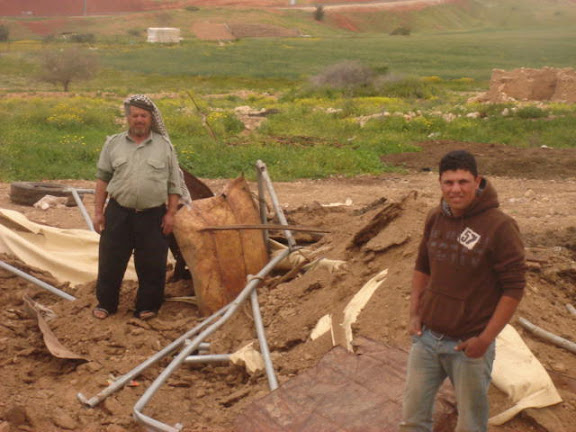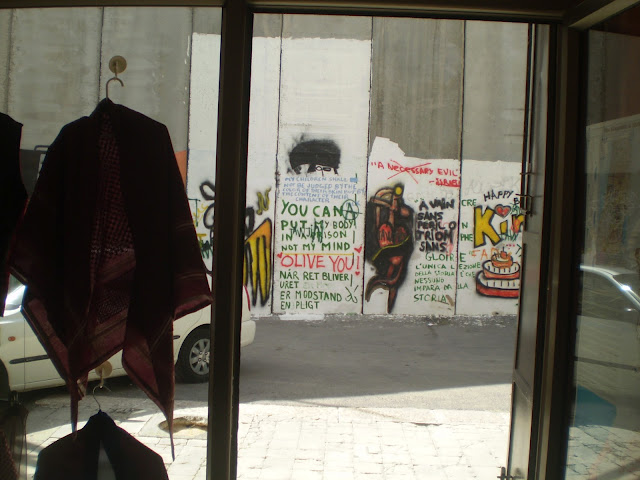Tag: Area C
-
Demolitions: Israel’s path of destruction through the Jordan Valley
by Andreas 27 March 2012 | International Solidarity Movement, West Bank Families and their livestock are left without shelter as Israeli Occupation Forces soldiers and bulldozers leave a path of destruction El Hemmi, al-Farisiya and Khirbet Homse in the Jordan Valley On the 26th of March several houses and animal barricades were demolished in the…
-
Jordan Valley: Three families invaded by one hundred Israeli soldiers in Al Jiftlik
by Kim 17 March 2012 | International Solidarity Movement, West Bank On March 15th at 16:00 we got a call about three house demolitions in the village of Al Jiftlik, near the Jordan Valley. We threw ourselves into the first public transportation vehicle to take us to the village. It was dusk when we came to…
-
The isolated corner
by Axel 15 March 2012 | International Solidarity Movement, West Bank In the outer part of Bethlehem very close to Rachel’s Tomb, Mariam (who wishes not to use her actual name) runs her small Palestinian souvenir shop. But this is not a shop in the usual touristic places of Bethlehem, and not a place you…


